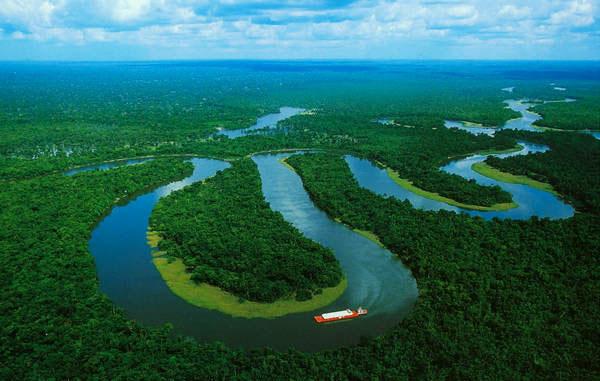Under the muddy, dark Amazon River water was a large number of undiscovered reefs with colorful sea fans, coral, plants, fish and very big sponges. It was one of the biggest surprises in modern ocean science.
Most ocean reefs need sunlight to exist.
On their boat that day in 2012, they carried a hand-drawn map that suggested maybe a large set of reefs sat just below them.
Brazilian scientist Rodrigo Moura of the Federal University of Rio de Janeiro, brought the map. He had read about the possible reefs in a 1977 research paper.
He lowered a dredging machine into the muddy water.
Oceanographer Patricia Yager was there too. With others, she leaned over the boat's edge, waiting to see what Moura would bring up from the bottom. They did not expect much.
"But we were very excited about the possibility, and of course he brings up the most amazing animals I have ever seen, at least in this part of the world. They were colorful, coral, sponges, fish, brittle stars, all kinds of things I could not have imagined in my wildest dreams, lived underneath this river plume."
The team was studying the area where the Amazon River flows into the Atlantic Ocean. Where these waters meet, the world's largest river moves out across the top of the ocean, spreading out like a fan.
Yager teaches oceanography at the University of Georgia in the U.S. She explains that the water from the river stays separate from the ocean as it moves across it, covering the ocean with its dark and muddy water.
The reefs sit hidden in the ocean, about 50 meters below the surface of the water, says Yager.
"And so it is not being bathed in the river plume itself. It's far below, in the very salty ocean, so the fresh water is not touching the reefs, they're in salty ocean water."

The reefs run from the French Guiana border to Brazil's Maranhao state, covering about 9,500 square kilometers.
Yager says she was surprised to find coral reefs below the dark muddy water.
"You can't look down and see them like other reefs, they're quite deep. And then on top of that, the water, the surface layer of the water is very dark and turbid, so yeah, you can't see them from the surface, that's why we didn't know they were there."
She says that she was taught that coral needs sunlight to survive. And yet, here were coral in the lowlight of this area and they were just fine.
Some of the reefs do get sunlight for part of the year.
She says in the areas that get less light, the living creatures are less dependent on photosynthesis.
Some of the coral reefs stand 30 meters high. They are home to lobster, red snapper fish and very big sponges. But the area does not have as many different kinds of animals as some of the other well-known reefs around the world, like Australia's Great Barrier Reef.
On their trip in 2012, the team only had a short time to find and explore their surprising discovery. The Brazilian scientists went back to the reefs in 2014 to do more studies of the reefs.
Recently they published their findings in the journal Science.
Yager says they plan to keep studying the area. One day, they would like to use they would like to use submersibles—vehicles used under water, to explore the reefs.
"It would be really nice to not have to dredge this system to understand it, because of course that is a very destructive method. I would rather go down with cameras and look at it instead of destroying it."
She says discovering these reefs is an example of how little is known about the oceans, and how important exploration is.
"We need to be open to discoveries," she says.
News about the reef comes when there is more bad news about the problems of coral bleaching in Australia's Great Barrier Reef. Scientists warn the bleaching is due to warming waters, and it is very damaging to the coral.
Yager says it might help to study how these Amazon reefs survive with less sunlight. Maybe, she says, scientists can find ways to help the other reefs suffering around the world.
But the Amazon reefs face their own threats. Companies want to drill for oil near the reefs. If they go forward, Yager warns, those large-scale operations could damage the reefs.











